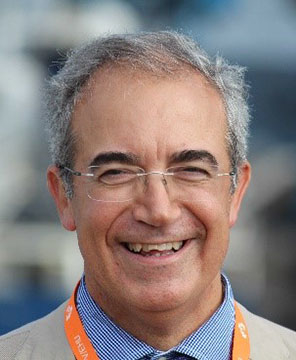We will hold The 11th Special Research Seminar of School of Engineering "From planar to spatial mechanisms. Some design criteria of parallel robots" by Prof. Alfonso Hernández Frías and Assoc. Prof. Víctor Petuya of University of the Basque Country.
Abstract
The kinematic radiography of a machine is a mechanism, and a mechanism is nothing more than a set of geometric constraints. From this approach, it is easier to present the concept of mobility applied to a mechanism, to a kinematic pair, or to an element of a mechanism. In fact, there is a very special element in a mechanism that is the coupler, end-effector or mobile platform, which is the one that define the application of the mechanism. But, to know the number of degrees of freedom of the end-effector is not enough. More complete information about its motion capability is given by the so-called motion pattern. The motion pattern is, in general, an instantaneous characteristic. It depends on the mobile platform pose. However, the morphological or structural synthesis allows designing parallel manipulators with permanent motion pattern along the workspace, which is a great technical benefit.
A singularity analysis detects those configurations where the robot can suffer a loss of local mobility, the blocking of an element, or losing control. Except for very particular applications, singularities are non-desired configurations. Therefore, the job of the engineer is oriented to size the robot so that it operates in a wide, regular and free of singularities workspace.
Using the GIM software , some planar and spatial mechanisms will be modelled to illustrate the theoretical concepts revised during the lecture.
, some planar and spatial mechanisms will be modelled to illustrate the theoretical concepts revised during the lecture.
Biographical data

Professor Alfonso Hernández Frías
Alfonso Hernández Frías has been Professor of Mechanical Engineering since 1995 in the Department of Mechanical Engineering of the University of the Basque Country at the Faculty of Engineering of Bilbao. He has published several books and monographs on the Kinematics and Dynamics of Machines. He is co-author of a free software (GIM) for kinematic and dynamic analysis of mechanisms, with downloads in more than 560 institutions from a total of about 90 different countries. He has about 200 scientific publications, mainly in journals in the field of Robotics and Mechanisms. Along his career he has participated in numerous research projects and contracts with companies. Currently he chairs the Spanish group of the IFToMM and the technical committee of Robotics and Mechanisms of the Ibero-American Federation of Mechanical Engineering.

Associate Professor Víctor Petuya
Víctor Petuya is since 2007 Associate Professor in the Department of Mechanical Engineering at the Faculty of Engineering of Bilbao, Universidad del País Vasco (UPV/EHU). He has been involved as a researcher in 30 institutional projects at regional, national and European level. Also, he has been involved in 25 research projects directly in cooperation with companies. He has published 38 papers in international journals and 17 papers in Spanish journals. Also, he has been co-editor of 3 Springer books related to Robotics and Micromachines. He is co-author of 3 international patents. He has presented 76 communications in international and national congresses. In 2015, he was been awarded with the IFToMM — LMC TC Service Award. Currently he is Chairman of the IFToMM Technical Committee of Linkages and Mechanical Controls.
Details
Time and Date |
Monday, January 21, 2019, 17:00 - 18:30 |
Venue |
|
. Any information published on this site will be valid in relation to Science Tokyo.





